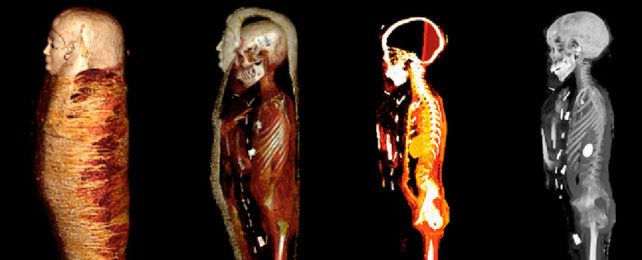A teen boy whose mummy had been stored in a museum since 1916 was covered in precious amulets, a study published Tuesday found.
A team of scientists has digitally unwrapped the 2,300-year-old mummy using a CT scanner to uncover its secrets.
The team found that the so-called "golden boy" was lavishly mummified with gold and semi-precious stones. Forty-nine protective amulets were precisely placed in three columns on his body, suggesting he was rich and of high status.
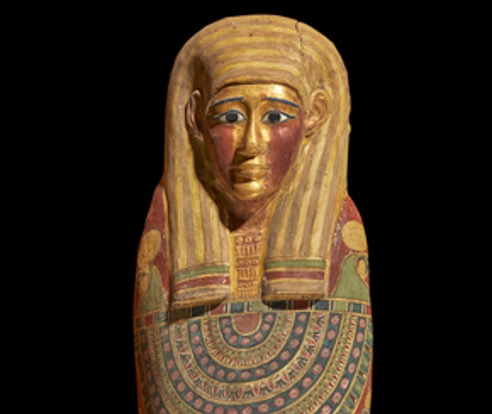
The finding is "definitely extraordinary" as high-ranking mummies were often pillaged for their precious ornaments, Sahar Saleem, study author and a professor of radiology at the faculty of medicine at Cairo University, told Insider in an email.
Because this mummy has not been disturbed, it provides a unique insight into how embalmers would carefully place the amulets on the body to protect the dead, she said.
Amulets to protect the dead
"Ancient Egyptians believed in the power of amulets, which depended on its material, color, and shape," said Saleem.
"During mummification, the embalmers said prayers and recited verses from the 'Book of the Dead' while placing amulets inside the mummy or in between the wrappings," she said.
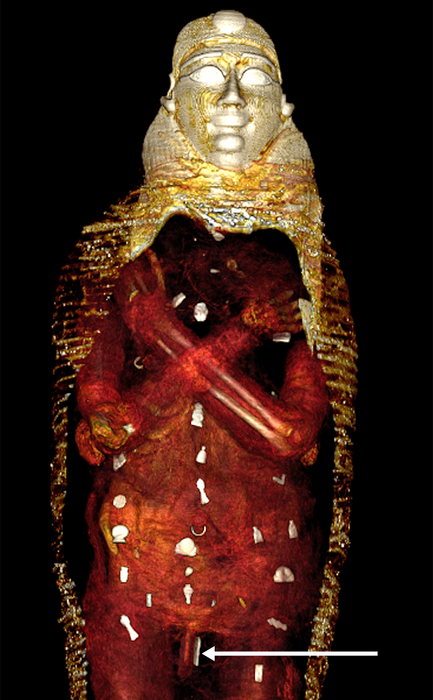
Each amulet had a specific meaning to protect the boy, who was about 14 or 15 years old when he died.
A scarab amulet for the heart, and a gold tongue for speech
A scarab-shaped amulet near the boy's heart, engraved with verses from the Book of the Dead, would have helped him be judged kindly in the afterlife, Saleem said.
"The heart scarab was mentioned in Chapter 30 of the Book of the Dead; it was very important in the afterlife during judging the deceased and weighing of the heart against the feather of Maat," the goddess of truth, justice, balance, and most order, Saleem said.
"The heart scarab silenced the heart in the Judgement day so not to bear witness against the deceased," she added.
A golden tongue-shaped leaf was also placed in the boy's mouth. This ensured the boy could speak with the gods after death.
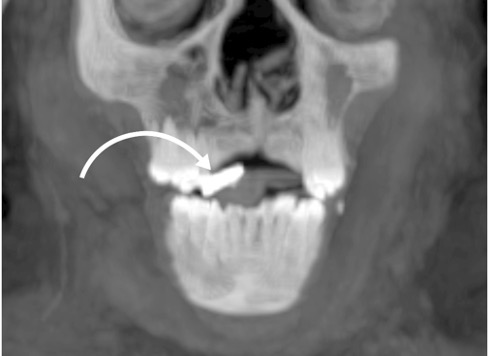
Another notable amulet was placed near the boy's penis. The "two-finger" amulet is meant to bring protection to the incision they made on the torso, Saleem said.
The other amulets had other varied protective roles. A "flask" amulet represented carrying holy water in the afterlife. A "Djed" amulet, representing the backbone of god Osiris, ensured the safe revival of the deceased. A "right angle" amulet brought balance and leveling to the deceased.
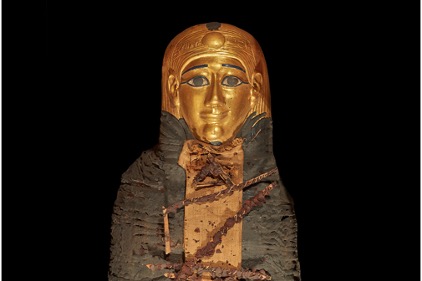
These findings are "exciting," Wojciech Ejsmond, an Egyptologist from the Warsaw Mummy Project who was not involved in the study, told Insider in an email.
"This study is providing valuable information on how ancient Egyptians lived, died, and what they thought will happen next," he said.
Sandals made for walking
The boy was also found to be wearing white sandals in his grave. Per the Book of the Dead, the deceased had to wear white sandals and be pious and clean before reciting its verses.
"The sandals were probably meant to enable the boy to walk out of the coffin," Saleem said in a press release.
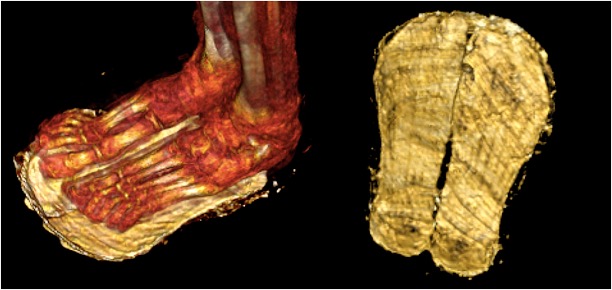
"Golden sandals were also found in the royal tombs; e.g. Thutmose III," Saleem told Insider.
This may indicate that while the boy was high-ranking, he may not have been royal.
An insight into ancient Egyptian circumcision
Another unexpected finding is to do with the boy's penis. Saleem said the scan suggests the boy was not circumcised. That's unlike another high-ranking figure, King Amenhotep I, whom Saleem studied as well.
This may indicate that ancient Egyptians were only circumcised in adulthood, Saleem said.
But Salima Ikram, head of Egyptology at the American University in Cairo, has another theory.
"The lack of circumcision is interesting as it might tell us something about his ethnicity – Egyptians tended to be circumcised generally before the age of 13," she told The Guardian.
"It might suggest that foreigners adopted Egyptian burial practices – and we know the Persians did," she said.
She cautioned, however: "I wouldn't hang all of this on one fragile foreskin."
Who was this boy?
The boy may yield more secrets still.
According to the Cairo Egyptian Museum records, he was first uncovered in 1916 in a cemetery used from BCE 332 to BCE 30 in Nag el-Hassay, Southern Egypt.
The boy would have been "the eyewitness of the dusk of the ancient Egyptian civilization, possibly the turmoils during the time of the last Ptolemaic kings, and perhaps even a short revival of Egypt's greatness during Cleopatra's reign," Ejsmond said.
His name is, as of now, unknown. But scientists are studying his sarcophagus closely to find more clues as to who he was, Saleem said.
The results were published in the peer-reviewed journal Frontiers in Medicine on Tuesday.
This article was originally published by Business Insider.
More from Business Insider: